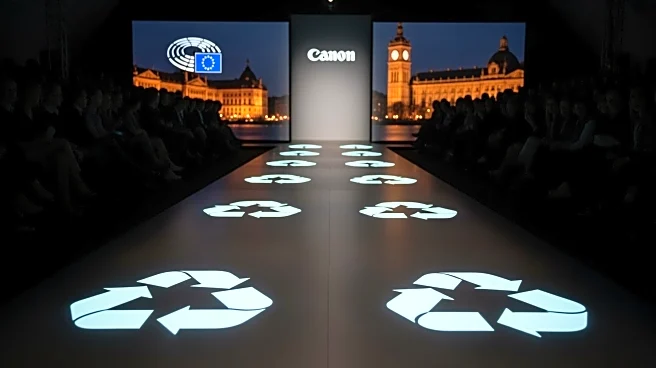What's Happening?
The European Commission has finalized the Product Environmental Footprint Category Rules (PEFCR) for apparel and footwear, a tool designed to score fashion products on sustainability. The PEFCR aims to provide
a uniform standard for calculating the environmental footprint of fashion items, using a life cycle assessment method. However, the methodology has faced criticism for being biased towards synthetic materials like polyester, which are deemed more sustainable than natural fibers such as wool. Critics argue that the PEFCR does not adequately account for the negative impacts of synthetic materials, such as microparticles and plastic waste. The governance structure and funding of the PEFCR have also been questioned, with concerns about the influence of industry stakeholders and the lack of dedicated budget from the European Commission.
Why It's Important?
The finalization of the PEFCR is significant as it represents a step towards standardized sustainability metrics in the fashion industry, which could influence legislation and consumer perceptions. The tool's bias towards synthetic materials may impact the market for natural fibers, potentially disadvantaging industries like wool and cotton. The controversy surrounding the PEFCR highlights the challenges in developing fair and comprehensive sustainability assessments, which are crucial for guiding industry practices and policy decisions. As the fashion industry grapples with sustainability, the PEFCR could shape future regulations and consumer choices, affecting the competitiveness of various materials and brands.
What's Next?
The European Commission may revise the broader PEF method, incorporating new impact factors such as biodiversity and microplastics. If approved, this could lead to public release of the single score for fashion products, potentially influencing consumer behavior and industry standards. The ongoing debate over the PEFCR's methodology suggests that further adjustments and consultations may be necessary to address concerns from various stakeholders, including natural fiber industries and environmental groups.
Beyond the Headlines
The PEFCR's development process raises ethical questions about industry influence in sustainability assessments. The reliance on outdated data and assumptions in the scoring system underscores the need for transparency and accuracy in environmental metrics. The controversy also highlights the tension between rapid implementation of sustainability tools and the need for robust, defensible methodologies.











